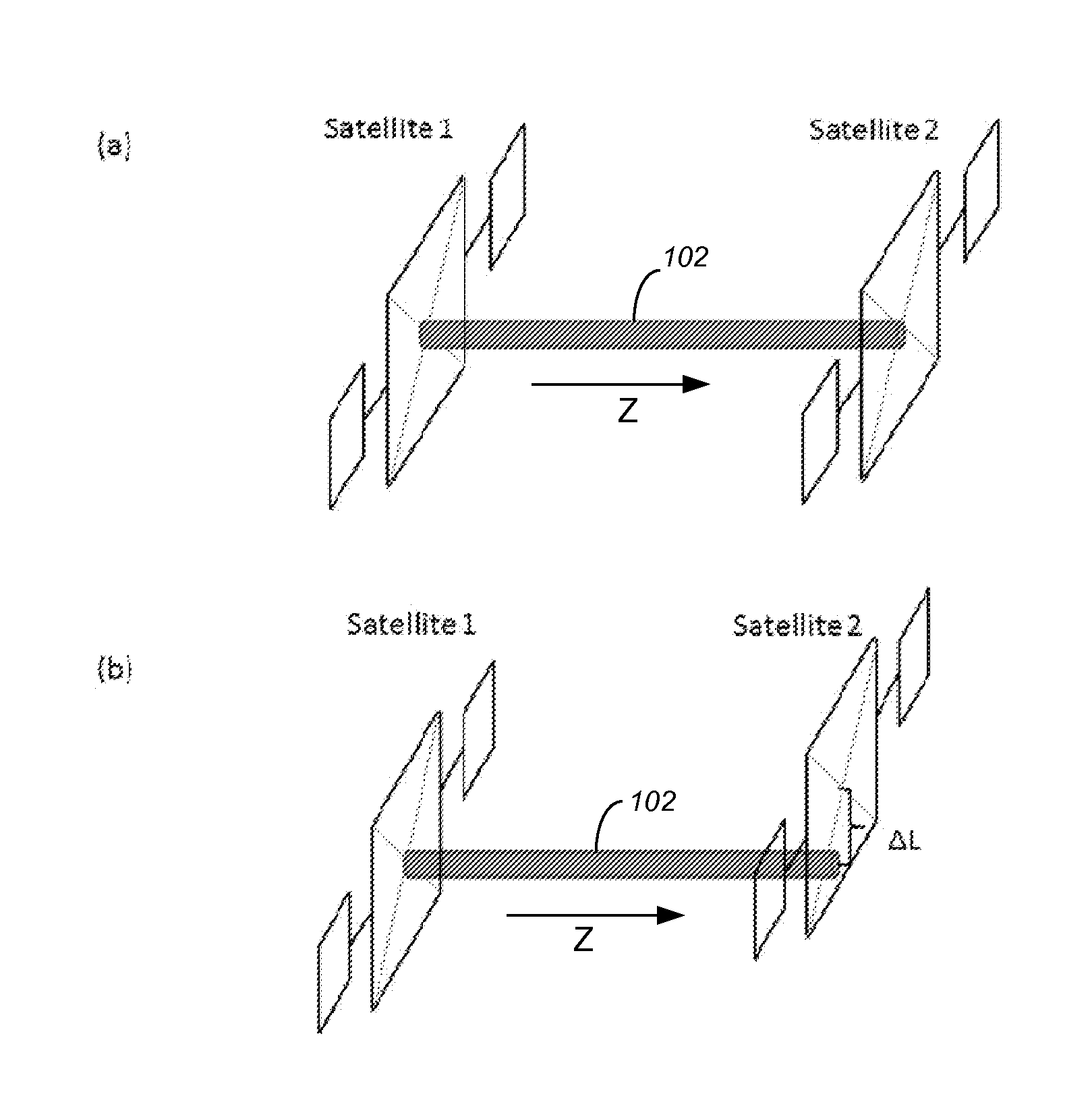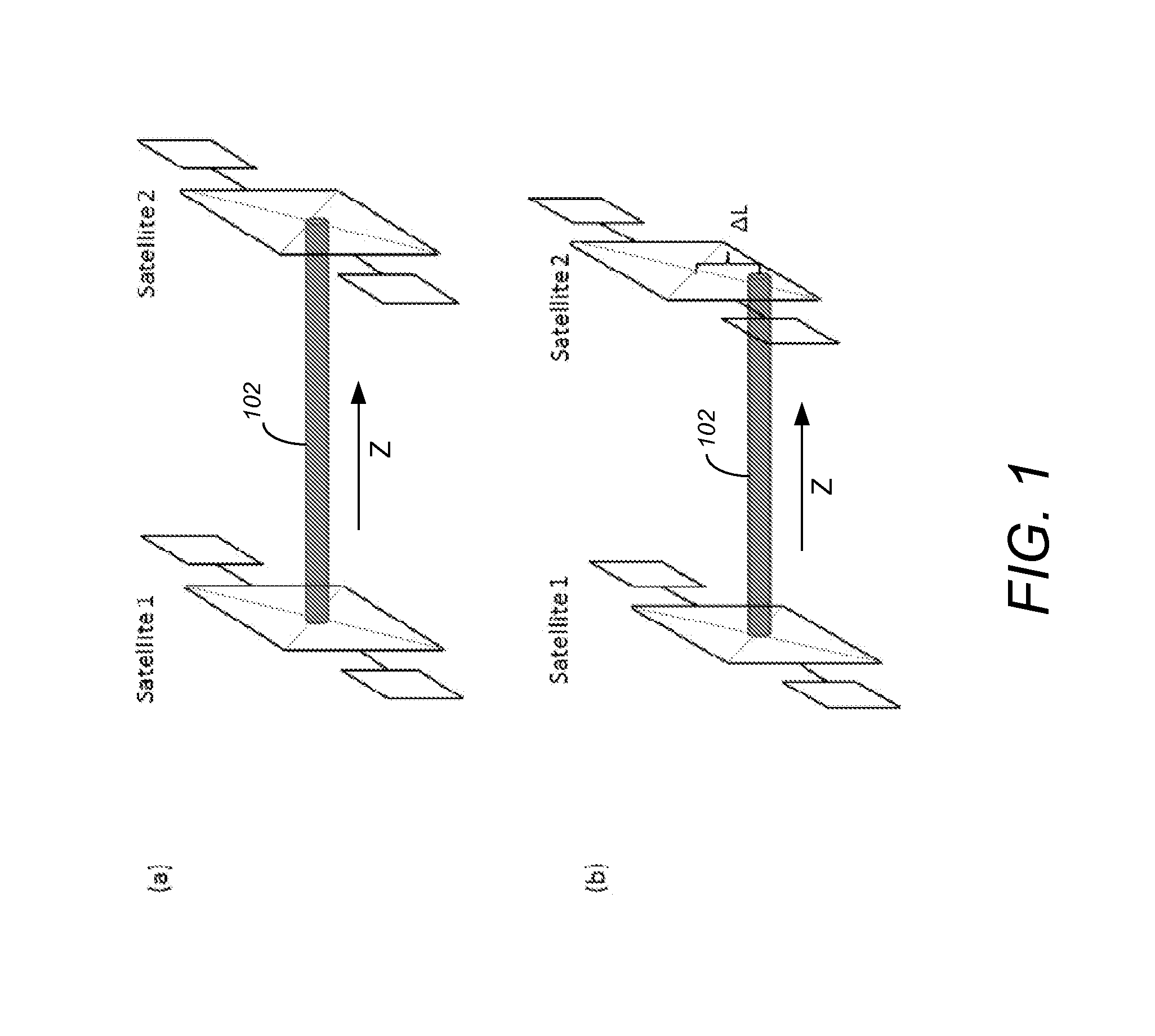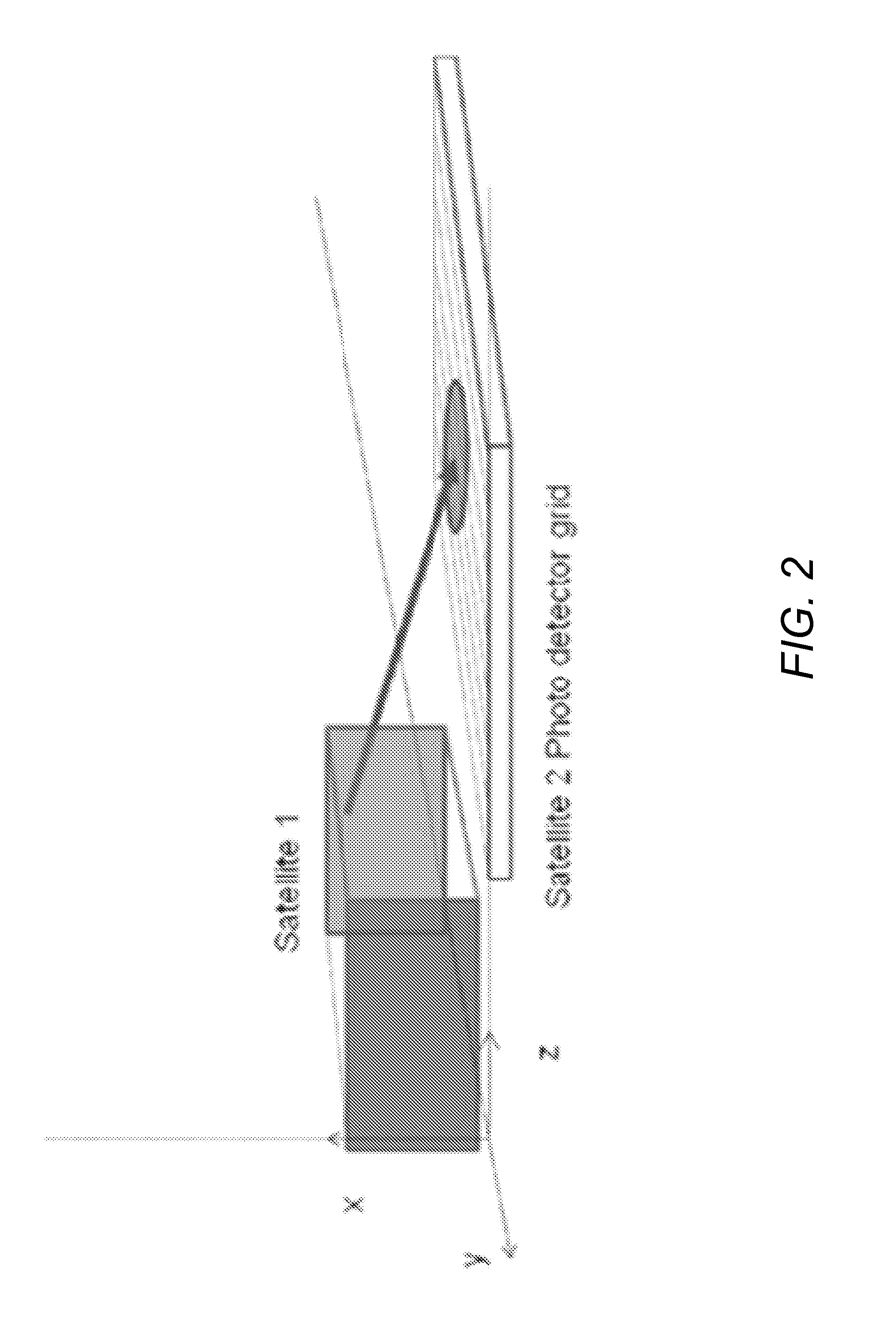Ultra high resolution gravity gradiometery technique
a gravity gradiometer and high resolution technology, applied in the field of ultra high resolution gravity gradiometery technique, can solve the problem that the resolution limit of the ranging system cannot be used to detect fine human-made underground structures, and achieve the effects of high detection resolution, fast data rate acquisition time, and long integration
- Summary
- Abstract
- Description
- Claims
- Application Information
AI Technical Summary
Benefits of technology
Problems solved by technology
Method used
Image
Examples
Embodiment Construction
[0034]In the following description, reference is made to the accompanying drawings which form a part hereof, and which is shown, by way of illustration, several embodiments of the present invention. It is understood that other embodiments may be utilized and structural changes may be made without departing from the scope of the present invention.
Qualitative Description
[0035]To understand embodiments of the invention, a qualitative description is useful, followed by a the derivation of an analytical expression.
[0036]One may assume the existence of two satellites and it is desirable to measure their relative displacement by monitoring the displacement of a beam of light located on one of the satellites and shining to a plate fixed to the other satellite. FIGS. 1(a) and 1(b) illustrate the general concept of shining light between two satellites and measuring a relative displacement in accordance with one or more embodiments of the invention. Assume that the light source is located on s...
PUM
 Login to View More
Login to View More Abstract
Description
Claims
Application Information
 Login to View More
Login to View More - R&D
- Intellectual Property
- Life Sciences
- Materials
- Tech Scout
- Unparalleled Data Quality
- Higher Quality Content
- 60% Fewer Hallucinations
Browse by: Latest US Patents, China's latest patents, Technical Efficacy Thesaurus, Application Domain, Technology Topic, Popular Technical Reports.
© 2025 PatSnap. All rights reserved.Legal|Privacy policy|Modern Slavery Act Transparency Statement|Sitemap|About US| Contact US: help@patsnap.com



